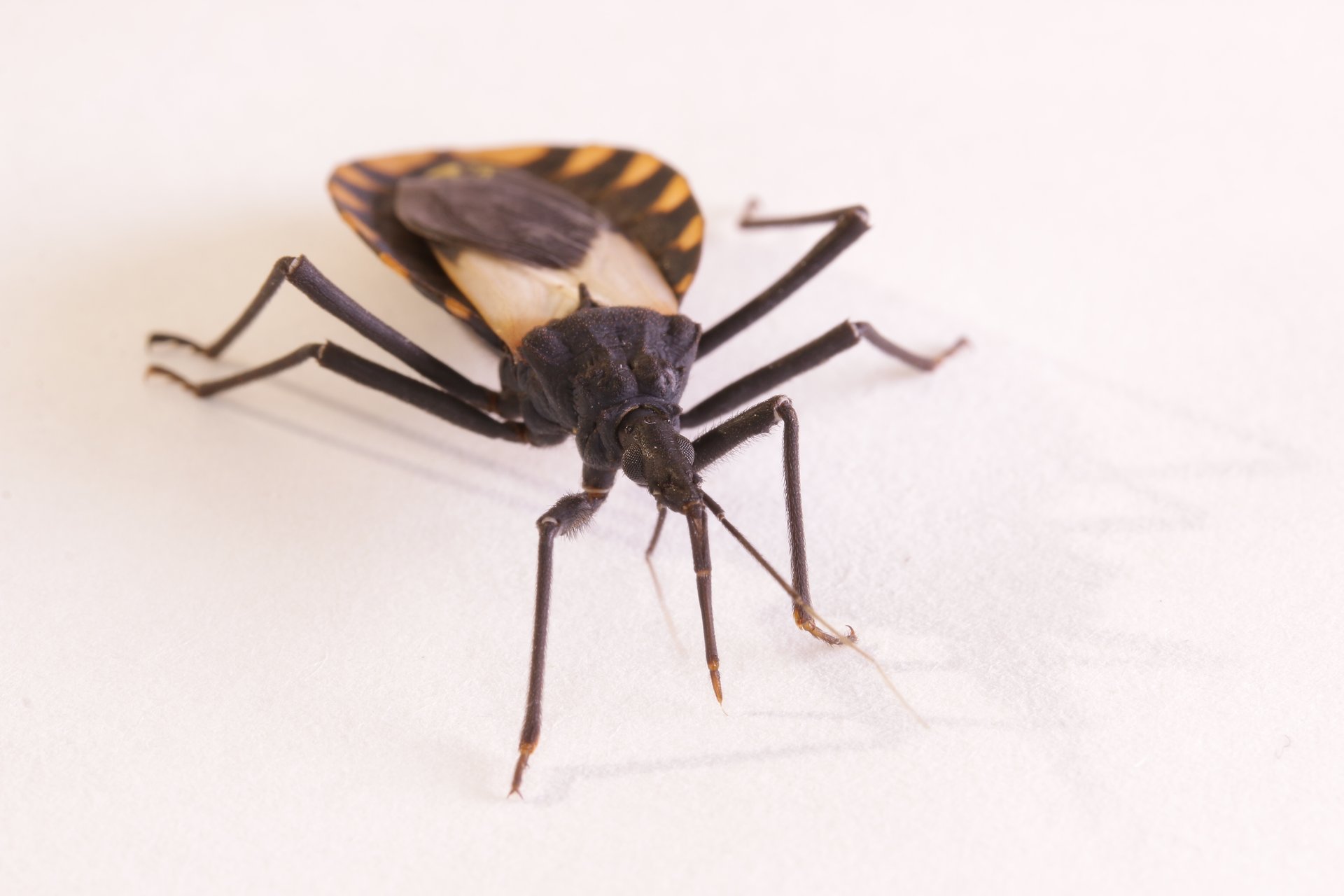
A disease spread by an insect that is now found in most U.S. states is more deadly than previously thought, new research shows.
Chagas disease, also known as “American trypanosomiasis,” is caused by a parasite (Trypanosoma cruzi) that can be transmitted to people by a triatomine bug (in photo at top of page) that is carrying the parasite, according to the U.S. Centers for Disease Control and Prevention (CDC). Chagas disease also can be transmitted other ways, such as through blood transfusions and by eating contaminated uncooked food.
Someone with Chagas disease can be without symptoms for decades — the disease is sometimes called a “silent killer.” But if Chagas disease goes untreated, the infection “is lifelong and can be life-threatening,” the CDC says. The most serious symptoms can include cardiac complications, including heart attacks, and intestinal complications.
Even when someone with Chagas disease is without symptoms, however, their risk of death is more than double that of someone who does not have Chagas, according to a study recently published in the PLOS journal Neglected Tropical Diseases.
The lead study author, Ligia Capuani of the University of Sao Paulo (Brazil) School of Medicine’s Department of Infectious Diseases, tells CNN:
“In every age category, people who had Chagas died more than people who didn’t have Chagas. So if you’re infected early in life, you should be treated.”
Another study released this month found that 1.24 percent of Latin American-born residents of Los Angeles County have Chagas disease. That translates to more than 30,000 people in that county. The CDC estimates that 300,000 people in the U.S. are infected with the disease.
That study, published in the journal Clinical Infectious Diseases, was coordinated by the Center of Excellence for Chagas Disease at Olive View-UCLA Medical Center. It has been described as the first large-scale survey of the disease in the U.S.
Avoiding the ‘kissing bug’
Triatomine bugs are blood-sucking insects also known as “kissing bugs” because they bite people’s faces. The bugs, which are about 1 inch in length, are found only in the Americas, from South America to the Southern United States, according to the CDC.
Indoors, they live in cracks and holes of substandard housing. The CDC notes the bugs are primarily found in rural, poverty-stricken parts of Latin America.
Outdoors, the bugs can be found in various settings, such as under porches and concrete.
Not all triatomine bugs are infected with the parasite that causes Chagas disease, however, and contact with one does not necessarily lead to infection. So the CDC considers the likelihood of catching Chagas disease from a triatomine bug in the U.S. to be “low, even if the bug is infected.”
Still, there are steps you can take to decrease your odds of contact with a triatomine bug abroad or at home.
If you plan to travel to rural Latin America, know that there is no vaccine for preventing Chagas disease yet. But for travelers who sleep in well-built structures, such as an air-conditioned or screened hotel room, the risk of exposure to infected bugs is low.
For travelers who stay in poorly built dwellings, the CDC says preventative measures include:
- Spraying infested dwellings with residual-action insecticides
- Using bed nets treated with long-lasting insecticides
- Wearing protective clothing
- Applying insect repellent to exposed skin
To prevent triatomine bug infestations at home, the CDC says measures include:
- Sealing cracks and gaps around windows, walls, roofs and doors
- Removing wood, brush and rock piles near your house
- Using screens on doors and windows and repairing any holes or tears
- If possible, making sure yard lights are not close to your house (lights can attract the bugs)
- Sealing holes and cracks leading to the attic, crawl spaces below the house and to the outside
- Having pets sleep indoors, especially at night
- Keeping your house and any outdoor pet resting areas clean, in addition to periodically checking both areas for the presence of bugs
What’s your take on this news? Sound off below or on Facebook.




Add a Comment
Our Policy: We welcome relevant and respectful comments in order to foster healthy and informative discussions. All other comments may be removed. Comments with links are automatically held for moderation.